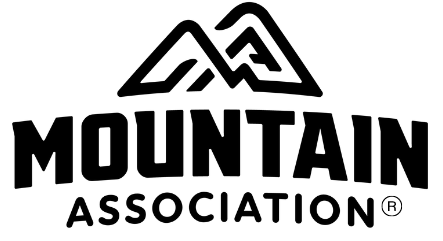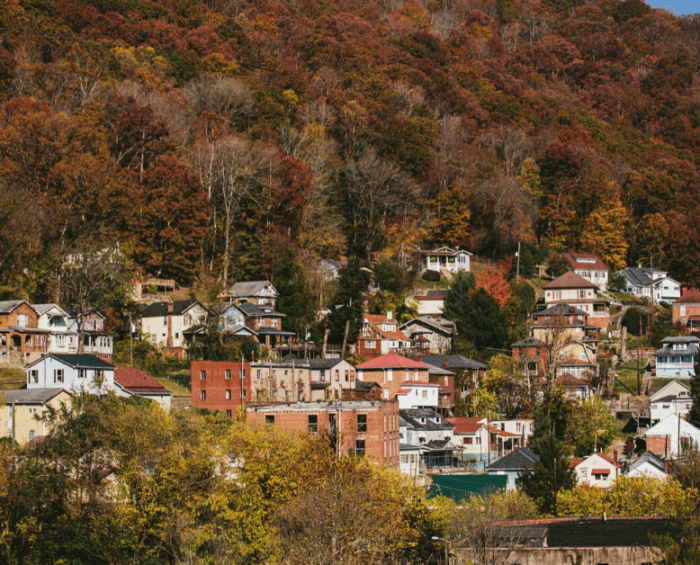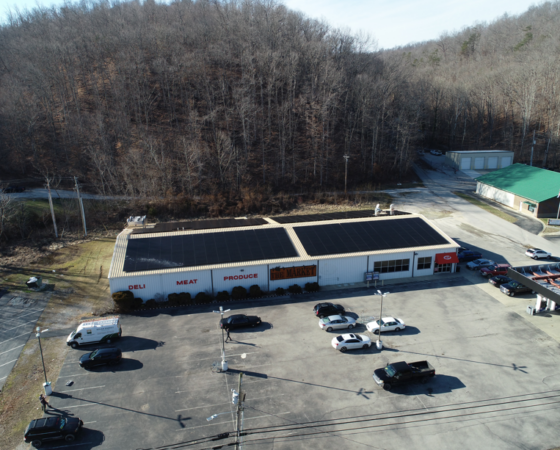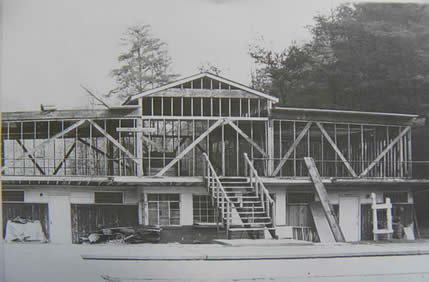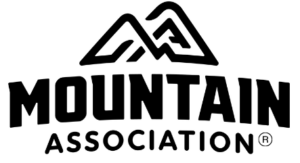Jed Weinberg knows both Eastern Kentucky and the energy world, through and through.
He grew up in Knott County, and now owns or manages four grocery stores in the towns of Frenchburg, Manchester, Martin and Salyersville. He has also owned a gas business for many years.
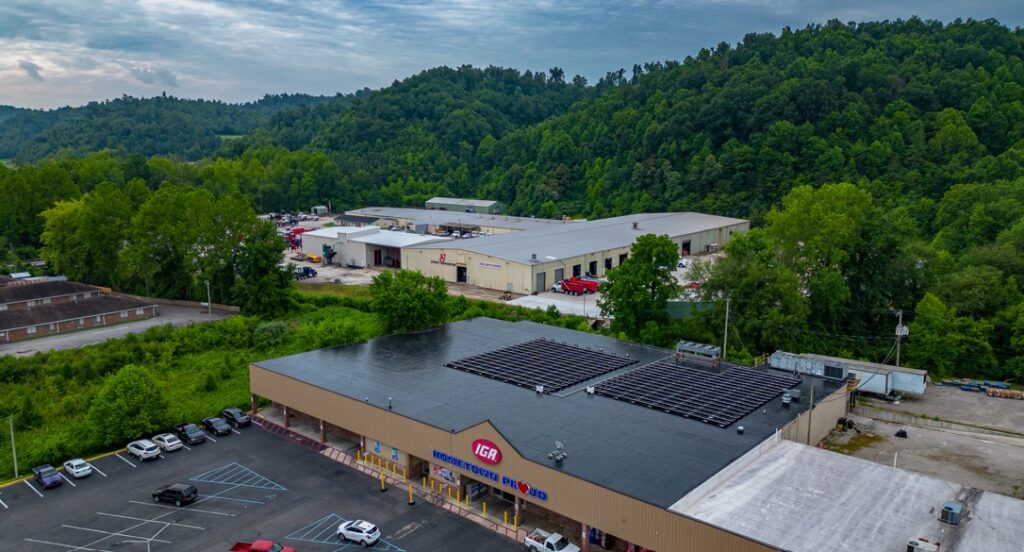
Mountain Association’s Lending team financed the remaining costs of the solar installation after grants. We have also provided affordable financing for major upgrades of Salyersville IGA’s heating, cooling, and refrigeration systems, and deli equipment in the past.
“When you think of solar, you don’t think of Kentucky. I’ve personally been in the fossil fuel business a long time, but the technology is getting better, it’s getting cheaper, and more efficient,” Jed said.
He is part of a group of Eastern Kentucky grocers who have been leading the way in installing solar as a way to keep their stores and rural communities thriving into the future.
Jed first became interested in solar for his store in Salyersville after seeing Gwen Christon of Isom IGA add solar panels to her store in Letcher County and learning how it penciled out for her. He grew up in a nearby community and their kids went to school together, and Gwen is a trusted peer. The Mountain Association supported Gwen with energy expertise, financing and grant applications to make her project happen, so after Jed got interested, we ran the numbers for Salyersville. He was sold.
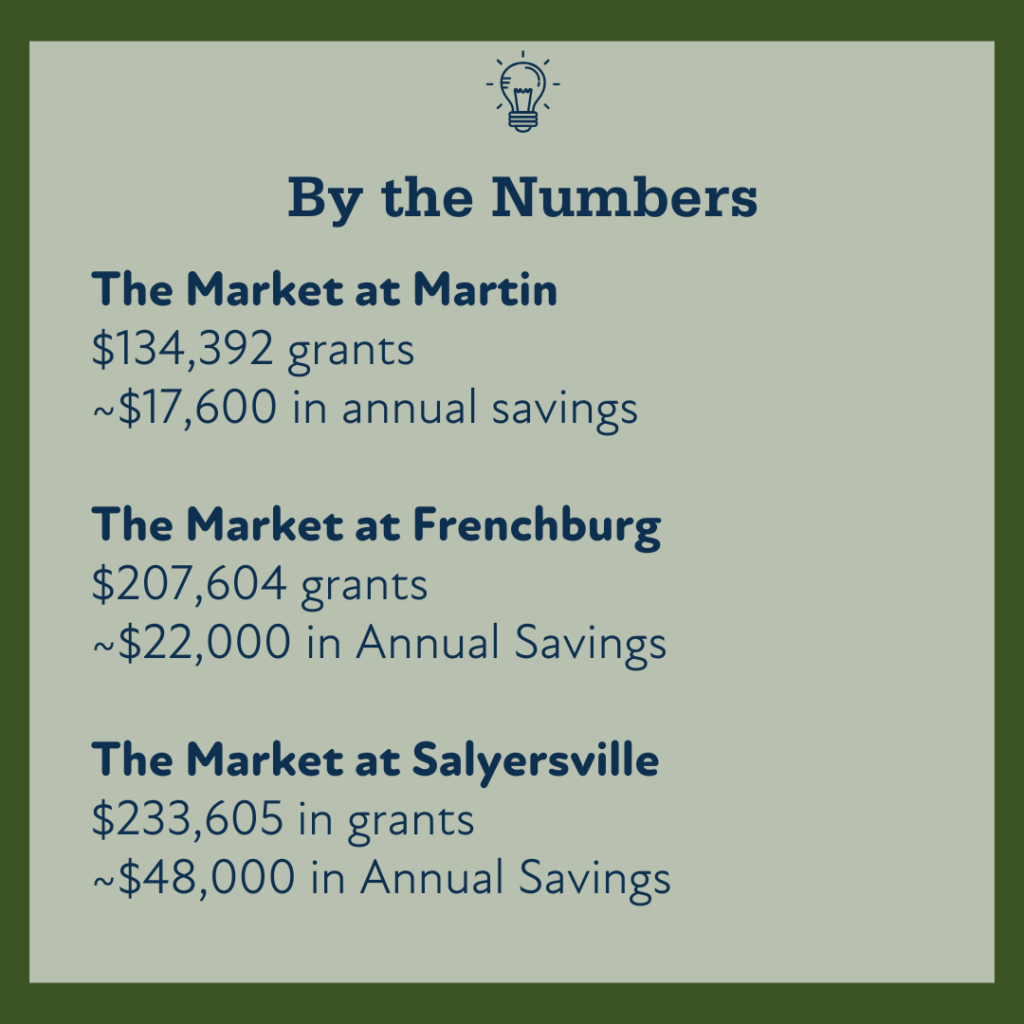
Supported by $60,000 in grants from the USDA USDA Rural Energy for America Program (REAP) and the Solar Finance Fund, this first phase of solar began saving the store about $23,000 per year after it was completed in 2023.
Next, Jed said he saw how Mike Long of Long’s Pic Pac in Pineville was able to add solar on his metal roof. That inspired him to have us look at Frenchburg and Martin – the store he manages. Those installations were both completed this spring 2025. At the same time, he wanted to pursue a second phase we proposed at Salyersville, also completed this spring, supported again by a USDA REAP grant of nearly $174,000. These two phases have brought the estimated Salyersville savings to $48,000 per year!
These savings are central to being able to keep the stores updated and running smooth for their customers.
“Grocery is a low-margin industry to begin with and now you have extra pressure from dollar stores. And, you have to make continual improvements. So the solar savings [after paying off the systems] will eventually go back into funding equipment when it breaks down, maintenance and improvement projects, you name it.”
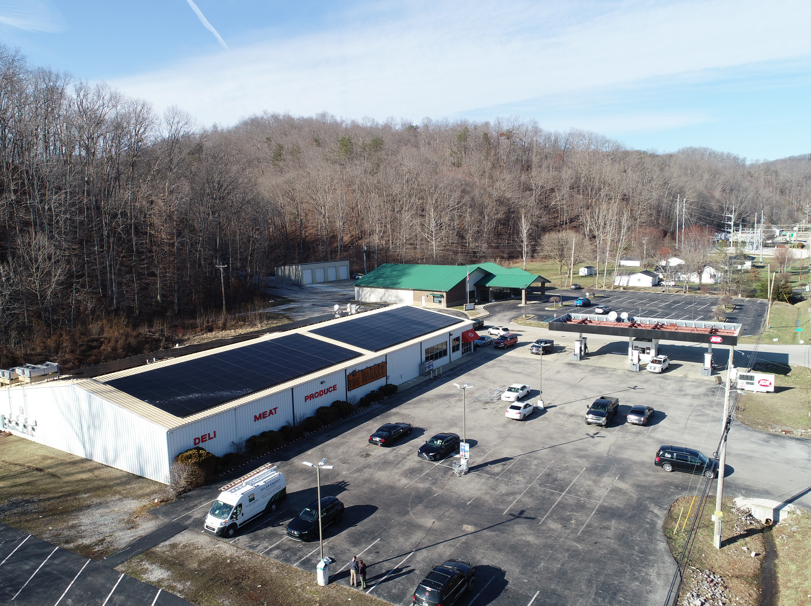
The area around Frenchburg offers a variety of outdoor activities, including hiking, ziplining, boating, and fishing on Cave Run Lake. They always have an uptick in sales in the summer as people stop in for their hunting, fishing and lake passes.
Solar fits exceptionally well with the daily power requirements of groceries. The harder the refrigeration equipment must work on hot afternoons, the more solar power is available to match the higher refrigeration load.
“At 317 KW in total, the installation at Salyersville is very likely the largest solar yet on an independent, or maybe any, grocery in Kentucky,” Josh Bills, Mountain Association’s Senior Energy Analyst, said. “That’s something Magoffin County and Eastern Kentucky should be very proud of.”
Solar is not the only new thing at the stores. They recently rebranded from IGAs to The Market.
Jed said the name change comes at a time where they are leaning into their service to the community, “We think this shows how we are community-based, friendly, and cost competitive. We want people to know that when they support us, they are supporting their local economy and the nearly 200 people we employ across our stores and office.”
He explained that, like many of his stores, The Market at Frenchburg is the only full-service grocery for about 30 miles. Though there are only 600 people in the town, they serve a lot of small communities around Menifee County who would otherwise be in a food desert.
“At all our stores, we try to have a selection of products so people can fix whatever they want to fix without leaving their town.”
A note about federal support for rural communities:
In total, these four projects were supported by almost $566,000 in federal grants through the USDA REAP program. Most rural communities in America don’t have the same robust populations, strong tax bases and abundant private investments that larger communities have, so these are small federal investments that have been key to keeping doors open in rural areas since the program started around 2008.
“Independent grocers need all the support they can get, whether it’s REAP or grants for equipment, so we can continue to be here for our communities for the long haul,” Jed described of the importance of grant support.
